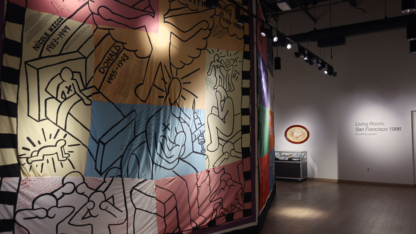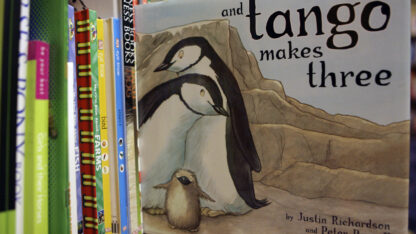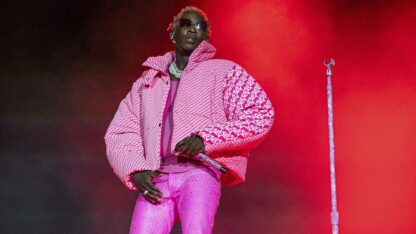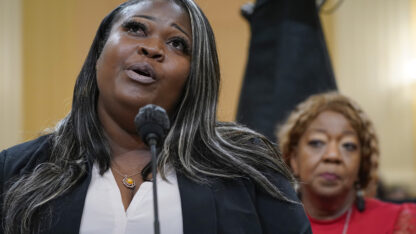Friends, family members and activists are mourning the death of O’Shae Sibley, a Black gay man who was stabbed late last month while dancing with friends at a New York City gas station.
The 28-year-old professional dancer and choreographer was killed while voguing to Beyoncé’s music as his friends filled up their car on the way home from the Jersey Shore on July 29.
Officials say a group of men approached and demanded they stop dancing, using “derogatory names,” “homophobic slurs” and “anti-Black statements.” As the confrontation escalated, one of them fatally stabbed Sibley in the rib cage.
“They murdered him because he’s gay, because he stood up for his friends,” close friend Otis Pena, who was at the scene, said later in a Facebook video.
A 17-year-old high school student has since been charged with second-degree murder as a hate crime and criminal possession of a weapon.
Hundreds of people gathered in Sibley’s hometown of Philadelphia for his funeral on Tuesday, where they remembered him as a passionate dancer and dedicated friend. The service also included a tribute by Philadanco!, Sibley’s former dance company, which has started a memorial fund in his honor.
There have been other outpourings of grief and remembrance in recent days, including from the ballroom communities in New York and Los Angeles.
People vogued “as an act of resistance” at gas stations on both sides of the country, including at the site where Sibley was killed, and dozens of mourners paid their respects outside the Stonewall Inn. Celebrities including Janelle Monáe, Spike Lee and Kalen Allen have offered tributes, with Beyoncé updating her website to read “REST IN POWER O’SHAE SIBLEY.”
Sibley’s killing has further rattled the LGTBQ community at a time when homophobic rhetoric and violence is surging across the country. Especially jarring to many is the fact that he was killed for voguing, an important form of self-expression and identity for queer people of color.
The style of improvisational dance, which emerged from the Harlem ballroom scene of the late 20th century, remains a way for LGBTQ people to “vocalize creativity, pride and survival in a queerphobic society,” says Melvin Williams, a professor of communication studies at Pace University in New York.
And it’s reached a broader audience over the last year thanks to Beyoncé’s widely-celebrated “Renaissance” album, which pays homage to Black ball culture. The shows on her ongoing, record-breaking tour — which included a stop in nearby New Jersey on the night of Sibley’s killing — even feature a ball with vogue dancers.
That juxtaposition underscores a troubling truth, as Williams tells NPR over email.
“To know Sibley lost his life simply for engaging in an art form that has empowered and freed so many Black LGBTQ people amid its mainstreaming with Beyoncé’s ‘Renaissance’ album stands as a sharp reminder that there are still few spaces where Black LGBTQ people can safely exist and express their queerness publicly,” he says.
Why voguing matters
The voguing tributes to Sibley are especially fitting, Williams says, as they “personify the LGBTQ community’s historic resilience amid highly discouraging societal treatment.”
Voguing occupies what he describes as a salient space in Black American LGBTQ history.
The highly stylized form of dance emerged in New York between the 1960s and 1980s, giving rise to the drag, queer and trans competitions known as balls.
Black and Latino voguers would battle it out on behalf of their houses — groups that were “part competitive affiliation, part surrogate family,” as the National Museum of African American History and Culture puts it.
They used the “rhetorical functions of voguing” to queer gender norms in drag and gender performative genres, peacefully settle disputes among rivals (such as by “throwing shade”) and share their personal stories, Williams explains.
“Amid their exclusion from White LGBTQ rights discussions, the ball scene and voguing granted Black LGBTQ people a haven to not only foreground their queer aesthetics and extraordinary talents but also express the intersectional marginality of being Black and LGBTQ in a queerphobic, American ecosystem aiming to inflict unwarranted violence upon them and erase their social contributions,” he adds.
Works like Jennie Livingston’s documentary “Paris is Burning” and Madonna’s Vogue brought voguing into the mainstream in the early 1990s, and musicians like Katy Perry and Beyoncé have continued to amplify it in popular culture in the years since.
Many connections exist between the history of ball culture, voguing, Sibley’s murder and the cultural impact of “Renaissance,” Williams says.
The album is inspired by Black ball culture, disco and house music, and eulogizes Beyoncé’s “Uncle Jonny” and other queer people who died during the AIDS epidemic.
“Like ball culture and voguing, ‘Renaissance’ induces a sense of safety, self-expression, joy, and escapism from the social perils of socioeconomic marginality using noteworthy queer art forms and dancers (like Sibley),” Williams writes.
The album gives people permission to claim their joy even in times of uncertainty, music journalist Danyel Smith told NPR after its release last year. She added that Beyoncé made a point of acknowledging the contributions of Black, queer artists, both by sampling their work and shouting them out in the liner notes.
“She’s saying to the Black, queer community: ‘I see you. I feel you. I want to dance with you. I want to party with you. But most of all, I want the world to know more about you,’ ” Smith said.
Even so, Williams says, the album wasn’t immune from “queerphobic” criticism — and the very people it aims to uplift continue to face societal discrimination.
“When connected to Sibley’s murder,” he writes, “‘Renaissance’ is prototypical of the archaic saying that art imitates life.”
Anti-LGBTQ sentiment is on the rise
Even as voguing has become more prominent in popular culture, Williams says there’s been relatively little discussion of the underlying themes behind it, such as LGBTQ rights and the exposure of Black LGTBQ people to hate crimes and other forms of violence.
For example, he said, voguing is one of the few art forms that Black trans women get credit for fashioning, though they receive “diminutive economic capital” for it. Plus, research shows that Black trans women are killed at a disproportionately high rate.
And there has been a marked rise in anti-LGBTQ legislation and violence in recent years.
State lawmakers across the U.S. introduced a more than 520 anti-LGBTQ bills as of May — a record, according to the Human Rights Campaign (HRC).
That prompted the civil rights group to declare its first-ever state of emergency for LGBTQ+ people in the U.S. in June, citing an “unprecedented and dangerous spike in anti-LGBTQ+ legislative assaults sweeping state houses this year.”
And two reports released in June put an even finer point on the growing anti-LGBTQ extremism across the country.
A report from the Institute for Strategic Dialogue found that the first five months of 2023 saw more incidents of anti-drag protests, online and offline threats, and violence than in the last seven months of 2022.
Researchers also found an increasing number of incidents where online hate speech manifested in offline activity — “for example, a popular online slur being found spray painted on a location hosting a drag event.”
Meanwhile, the Anti-Defamation League and GLAAD tracked at least 356 incidents of anti-LGBTQ+ hate and extremism in the U.S. between June 2022 and April 2023. Of those, the vast majority (305) of incidents involved harassment.
“From demonstrations aiming to intimidate organizers and attendees at drag shows, to bomb threats against hospitals that offer health care for LGBTQ+ people to a mass shooting that took the lives of five people in Colorado, incidents of anti-LGBTQ+ hate and extremism are an important part of a larger story about the heightened threats facing the LGBTQ+ community in the United States today,” the groups said.
At least 15 transgender and gender-nonconforming people have been killed so far this year, according to the HRC.
Williams says the stakes are especially high for LGBTQ people of color, who data show are more likely than white LGBTQ people to face discrimination in employment, the criminal justice system and their personal lives.
LGBTQ people of color also face discrimination within the broader LGTBQ community based on intersectional factors like race, he adds. Because of that, he says, LGBTQ people of color “must meticulously analyze the cultural politics of LGBTQ and non-LGBTQ spaces and exercise the utmost caution in every environment we enter, and always be on alert for potential danger.”
Williams says there’s no one-size-fits-all approach, but points to Sibley’s death as another sign that more needs to be done.
“There exists a clear need for local, state, and federal LGBTQ safety initiatives, task forces, and an acknowledgment of the limited safety avenues for this minoritized community if something as innocuous as a Black gay man joyfully dancing with friends at a gas station can put someone’s life in danger and result in murder,” he writes.
Copyright 2023 NPR. To see more, visit https://www.npr.org.
9(MDAxODM0MDY4MDEyMTY4NDA3MzI3YjkzMw004))
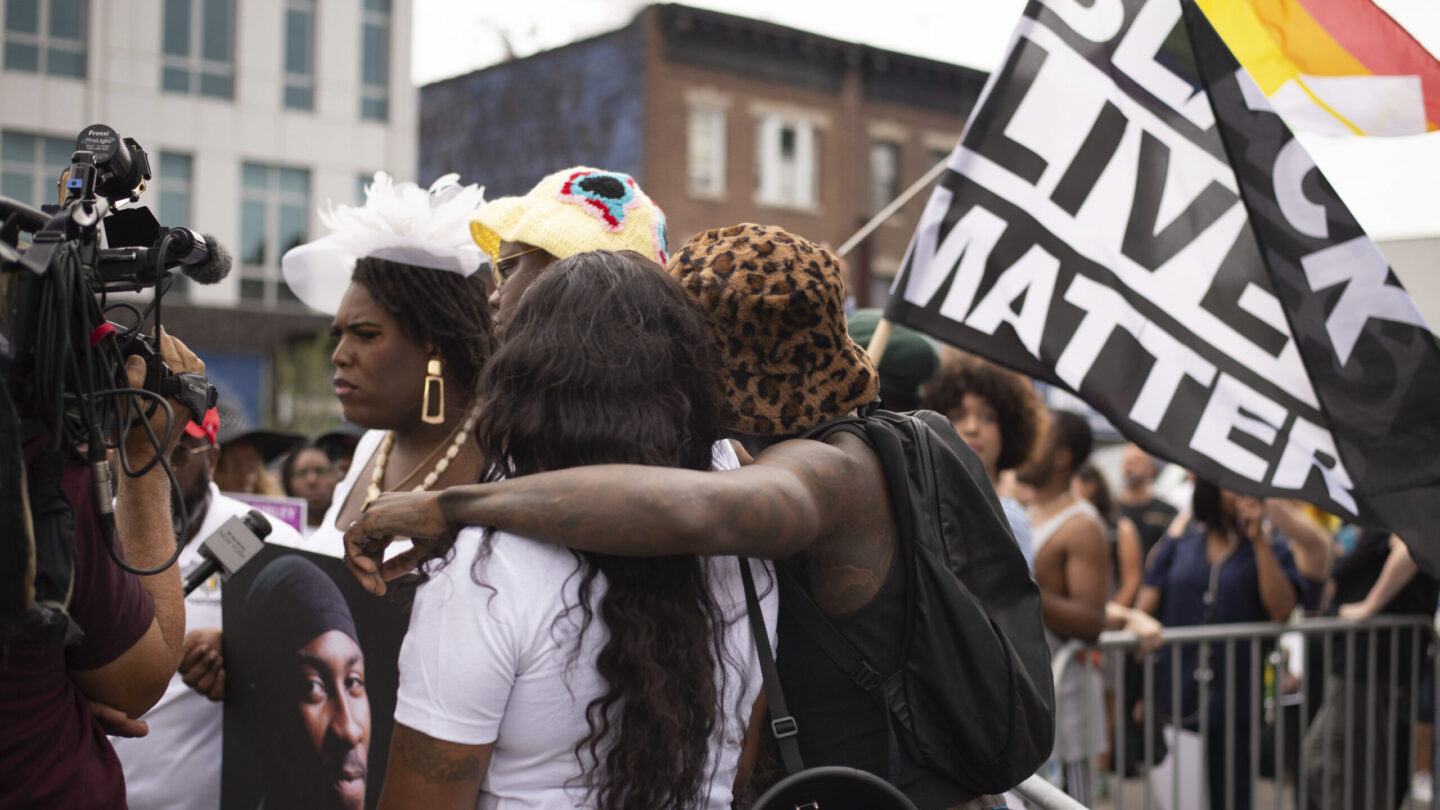
9(MDAxODM0MDY4MDEyMTY4NDA3MzI3YjkzMw004))

